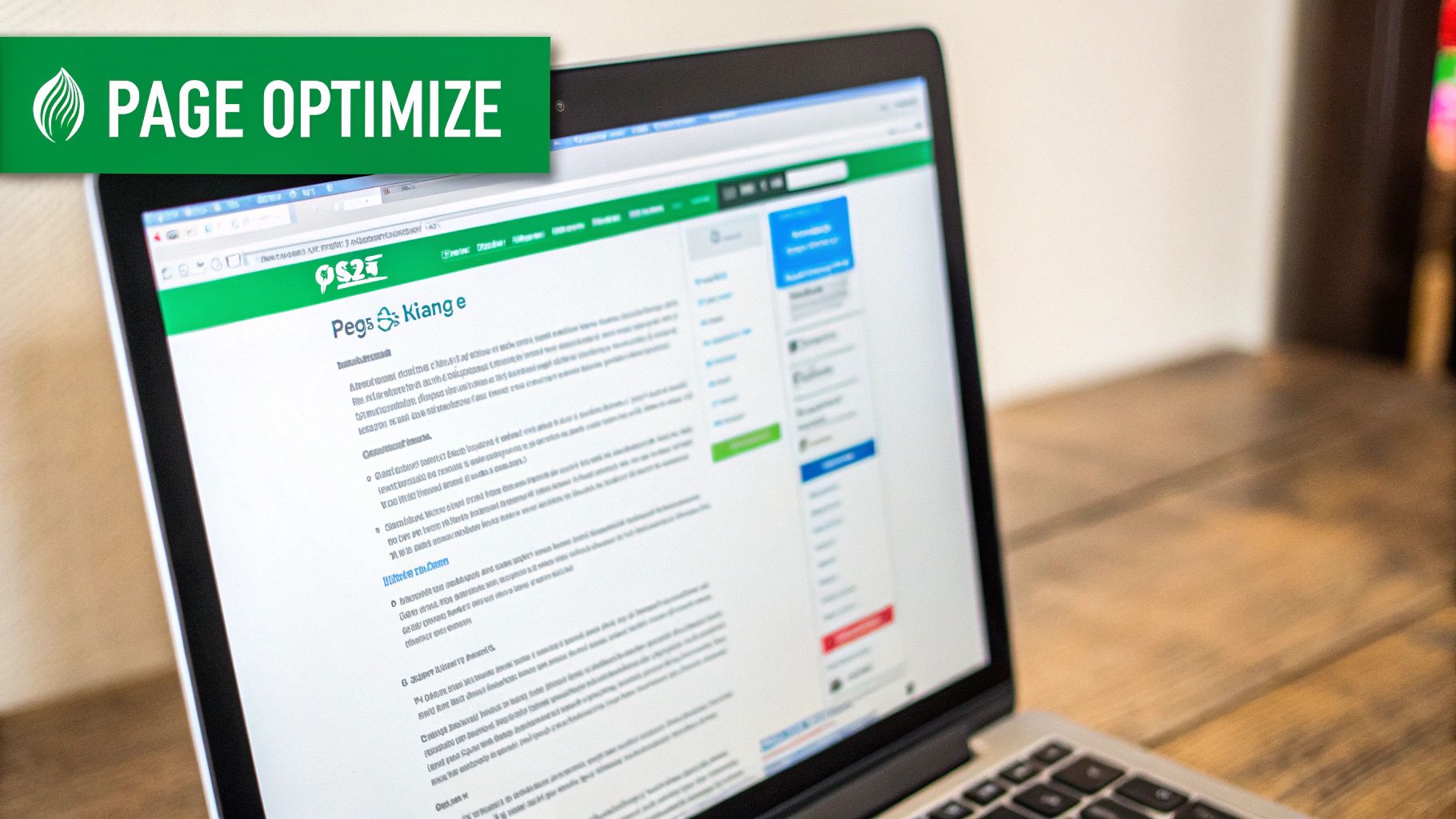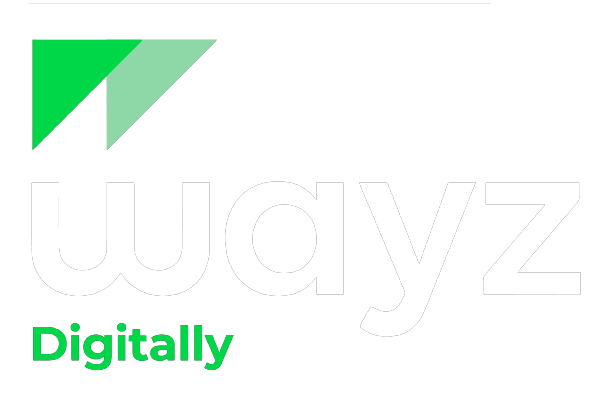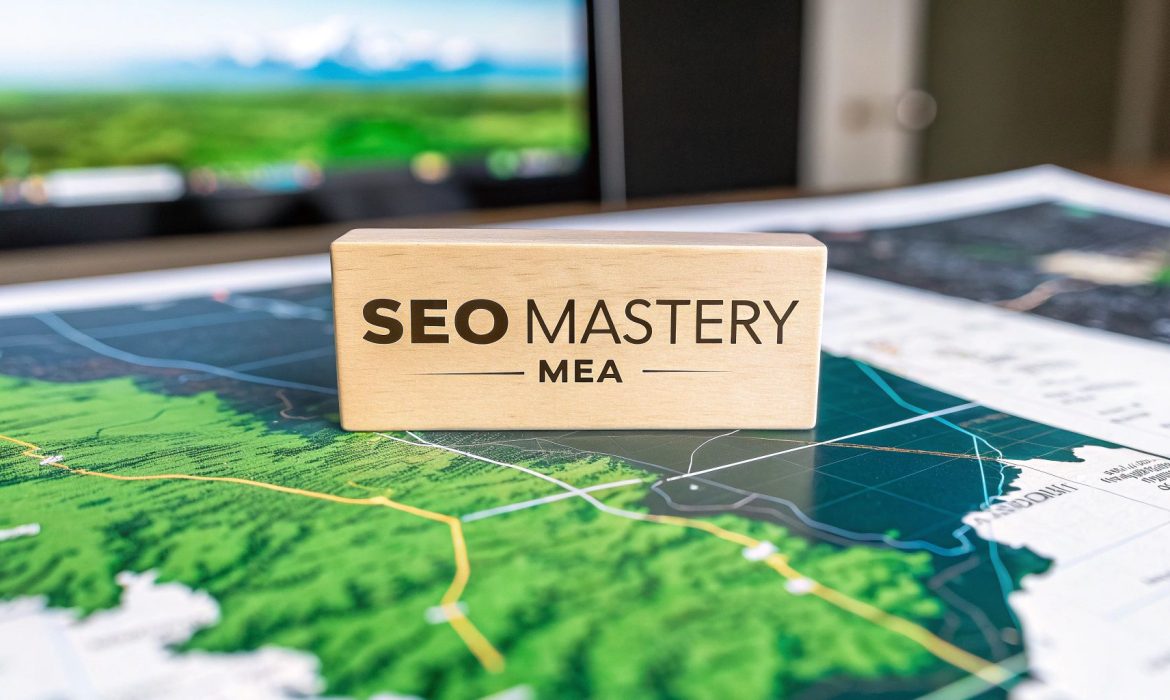Navigating the Unique SEO Landscape of MEA Markets

The Middle East and Africa (MEA) region offers a vibrant and constantly shifting digital environment. This requires a unique approach to SEO, distinct from strategies effective in Western markets. User behaviors, search engine algorithms, and even the underlying technological infrastructure can differ dramatically between countries like the UAE, Saudi Arabia, and Egypt. A global, one-size-fits-all SEO strategy often won’t deliver the best results.
Understanding the MEA Digital Ecosystem
One key difference in the MEA region lies in the sheer variety of languages and dialects. Arabic is widely spoken, but variations in dialect and the use of formal vs. colloquial language heavily influence keyword research and content creation. The multilingual nature of the region makes a robust multilingual SEO strategy essential. This goes beyond simple translation.
Effective multilingual SEO involves carefully implementing hreflang tags and selecting Content Management Systems (CMS) designed to support right-to-left languages.
Another important factor is the exceptionally high mobile penetration in many MEA markets. This emphasizes the critical need for mobile-first indexing. Optimizing for varying device preferences and browser usage patterns is essential. Connection speeds can fluctuate considerably, impacting how users access websites and the types of content that perform well.
This demands a nuanced approach to technical SEO, including optimizing for Core Web Vitals and addressing website performance issues stemming from slower internet speeds.
Adapting to Cultural Nuances and Regional Regulations
Cultural nuances significantly impact SEO strategies in the MEA region. Content needs to resonate with local audiences while remaining sensitive to cultural and religious values. Aligning content calendars with regional events and holidays can help maximize engagement and relevance.
Specific topics or keywords may be subject to regional regulations. This directly affects how content is created and optimized. Understanding these regulations is a crucial part of a successful MEA SEO strategy.
Leveraging Paid and Organic Strategies
A comprehensive MEA marketing strategy should consider the synergy between paid and organic approaches. Pairing SEO with Pay-Per-Click (PPC) advertising can significantly boost visibility within the region. For valuable insights on this topic, explore resources on Pairing SEO with PPC.
The growing investment in SEO tools and software further underscores the rising importance of SEO. The MEA SEO software market generated USD 4.1 billion in 2024. It’s projected to reach USD 8.0 billion by 2030, exhibiting a CAGR of 11.7% from 2025 to 2030. This impressive growth is fueled by large enterprises and the rapidly expanding SME segment. Find more detailed statistics here.
To illustrate the market growth, let’s look at the following table:
SEO Market Growth in MEA Region
Comparison of SEO market size and growth across different years
| Year | Market Size (USD Billion) | YoY Growth (%) |
|---|---|---|
| 2024 | 4.1 | – |
| 2030 (Projected) | 8.0 | – |
This table highlights the substantial projected growth of the SEO market within the MEA region, emphasizing the increasing opportunity for businesses investing in SEO. The projected doubling of market size between 2024 and 2030 signifies the growing recognition of SEO’s value in this dynamic digital landscape.
Key Takeaways for MEA SEO Success
Succeeding in the MEA SEO landscape requires a targeted approach that recognizes the region’s unique characteristics. Localization is paramount. This encompasses language translation, cultural adaptation, and sensitivity. Technical SEO must prioritize mobile optimization and account for diverse technological infrastructure. Finally, content strategy needs to resonate with local audiences while complying with regional regulations. By understanding and adapting to these nuances, businesses can tap into the vast potential of the MEA market and achieve lasting SEO success.
Local SEO Tactics That Actually Work in Gulf Markets

Want to boost your online presence in the Gulf? It takes more than just copying Western SEO strategies. This section dives into proven tactics that resonate with Gulf audiences and deliver real results in key markets like the UAE and Saudi Arabia.
Google My Business Optimization for the Gulf
Google My Business (GMB) is essential for local SEO everywhere, but it’s especially vital in the Gulf. Many consumers in the UAE, for example, rely heavily on GMB to find nearby businesses, check hours, and read reviews.
Optimizing your GMB profile is crucial for attracting local customers. This means keeping your business information accurate, up-to-date, and translated into both Arabic and English. Actively responding to reviews also builds trust and shows you’re engaged with the community.
Leveraging Region-Specific Directories
Beyond GMB, regional online directories play a significant role in Gulf markets. These directories often focus on specific industries or demographics, giving you a targeted way to reach potential customers.
Listing your business in relevant regional directories can significantly improve your local search visibility. This approach works alongside GMB optimization, providing another powerful channel to connect with local audiences.
Mobile-First SEO for a Mobile-Centric Region
Smartphone use is exceptionally high in the Gulf. This makes mobile optimization a necessity. Your website should be responsive, load quickly on mobile devices, and provide a seamless user experience on smaller screens.
Understanding regional mobile usage, including popular social media platforms, is also key for effective content distribution and reaching your target audience.
Arabic Keyword Research: A Deeper Dive
Keyword research is fundamental to SEO, but the Gulf’s multilingual nature demands a nuanced strategy. Simply translating keywords from English to Arabic isn’t effective.
You need to understand dialectal variations, formal and colloquial language choices, and the specific search intent of Gulf users. Effective Arabic keyword research digs into these nuances, allowing you to target the terms your potential customers actually use.
Local Keyword Research and Regional Search Behaviors
Search behaviors differ significantly between countries within the Gulf. What works in the UAE might not work in Saudi Arabia or Kuwait. This underscores the importance of localized keyword research.
Understanding the cultural context and preferences of each market helps tailor your SEO strategy for maximum impact.
To illustrate the significance of SEO in the region, the UAE’s SEO software market is expected to hit USD 2.4 billion by 2030, up from USD 1.2 billion in 2024. That’s a 12% CAGR from 2025-2030! Learn more. This growth shows the increasing importance of SEO, with businesses investing heavily in tools and strategies. Understanding local SEO nuances is now more critical than ever for staying competitive.
Let’s look at a breakdown of the UAE SEO software market by business size:
To understand how different business segments are adopting SEO software in the UAE, the following table provides a comparison of market share, growth rate, and key adoption factors.
UAE SEO Software Market Comparison by Business Size
| Business Segment | Market Share (%) | Growth Rate (%) | Key Adoption Factors |
|---|---|---|---|
| Enterprise | 65 | 8 | Focus on brand building, advanced analytics, and integrated marketing campaigns. |
| SME | 35 | 14 | Cost-effective solutions, ease of use, and localized targeting. |
The table highlights that while enterprise businesses hold a larger market share, the SME segment is experiencing faster growth. This suggests that smaller businesses are increasingly recognizing the value of SEO and are actively seeking solutions to enhance their online visibility. This difference in growth rate also showcases the expanding opportunities for SEO software providers catering to the specific needs of SMEs in the region.
Multilingual SEO: Beyond Basic Translation

Successfully navigating the complexities of multilingual SEO in the Middle East and Africa (MEA) takes more than simple translation. It requires a nuanced understanding of the region’s diverse linguistic and cultural landscape, paired with solid technical SEO know-how. This section will explore the core components of a successful multilingual SEO strategy for MEA markets.
Hreflang Implementation: Guiding Search Engines
One of the most important initial steps in multilingual SEO is implementing hreflang tags. These tags act as signposts for search engines, indicating the language each version of your website targets. This ensures that search engines like Google present the correct version to users based on their language settings.
Proper hreflang implementation is vital for preventing duplicate content issues. It also ensures users see the most relevant site version, impacting rankings and user experience. For instance, a user searching in Arabic should be directed to the Arabic version, not the English one.
Choosing the Right Content Management System
Selecting the appropriate Content Management System (CMS) is critical for multilingual SEO. Not all CMS platforms offer the same level of support for right-to-left (RTL) languages like Arabic.
Your CMS should seamlessly handle RTL scripts, avoiding display problems or negatively affecting SEO. This includes correct processing of text direction, character encoding, and other technical elements. A good CMS can make a significant difference in your multilingual SEO efforts.
Arabic Keyword Research: Understanding Dialects and Intent
Keyword research is fundamental to any SEO strategy. In the MEA region, Arabic keyword research demands a more specialized approach. You must consider dialect variations between countries and the use of formal versus informal language.
Furthermore, search intent can differ greatly across MEA markets. For example, SEO in the MENA region must factor in cultural diversity and local language variations. Arabic is common in many countries, but content should be adapted for each local market. A strategy effective in the UAE might not work in Egypt due to differing user intents and search habits. Learn more about MENA SEO strategies. In wealthier countries like the UAE, searches often have transactional intent, while in Egypt, they tend to be informational. Recognizing these nuances can dramatically improve your SEO performance.
Content Localization: Cultural Sensitivity and SEO Best Practices
Content localization goes beyond mere translation; it involves adapting content to connect with the local culture while adhering to SEO best practices. This includes incorporating culturally relevant examples, handling sensitive topics appropriately, and aligning content with local values.
Maintaining quality across multiple language versions is essential. This often involves collaborating with native speakers and implementing robust quality assurance processes. Consider developing separate content calendars tailored to each region’s important events and holidays.
Maintaining Quality Control at Scale
As multilingual content grows, maintaining quality becomes paramount. This requires implementing processes for continuous review and optimization.
- Regular Audits: Regularly audit your multilingual website to detect technical problems, content gaps, and improvement areas.
- Local Expertise: Utilize local expertise for keyword research, content creation, and quality assurance.
- Specialized Tools: Employ translation and localization platforms to improve workflows and maintain consistency across different languages.
By focusing on these key aspects of multilingual SEO, you can effectively connect with a broader audience in the MEA region, enhance user experience, and ultimately achieve greater success with your website.
Technical SEO Tailored for Regional Performance

Technical SEO in the MEA region offers both unique obstacles and exciting possibilities. Understanding the region’s specific technology and user habits is essential. This section explores website optimization for peak performance, highlighting vital elements for success in this vibrant market.
Mobile Optimization: A Top Priority
With widespread smartphone use across the MEA region, mobile optimization is critical.
-
Page Speed: Optimize images and code to reduce loading times, especially on slower connections. A fast website enhances user experience and SEO. Think of your website as a storefront – a slow-opening door can deter customers.
-
Responsive Design: Ensure your website adapts to different screens and devices. This adaptable design allows easy content access on any device.
-
AMP (Accelerated Mobile Pages): Explore AMP implementation for quick content delivery to mobile users. This framework streamlines web pages for optimal speed.
Structured Data for Local Visibility
Structured data markup helps search engines grasp your website’s content. This boosts local search visibility.
-
Schema Markup: Using schema.org vocabulary clarifies business details like location, hours, and services. Accurate information in search results becomes much easier to display.
-
Local Business Schema: The LocalBusiness schema is vital for targeting local MEA customers. This connects your online presence to your physical location.
Core Web Vitals and Regional Benchmarks
Core Web Vitals measure user experience. While global standards exist, regional benchmarks offer a more accurate goal.
-
Connection Speeds: MEA internet speeds fluctuate. Optimize accordingly, targeting performance that reflects regional connectivity.
-
Device Performance: Account for popular regional mobile devices and optimize your website’s performance to suit them.
Common Technical Pitfalls and Solutions
Some technical SEO issues frequently impact websites targeting MEA audiences.
-
Right-to-Left Language Support: Ensure correct handling of RTL languages like Arabic, including text direction and character encoding.
-
Hreflang Tags for Multilingual Sites: If your site uses multiple languages, correctly implemented hreflang tags prevent duplicate content penalties and ensure users see the correct version.
-
International Targeting in Google Search Console: Properly configure geographic targeting to specify your intended region.
Regular technical SEO audits tailored to regional needs promptly identify and resolve these issues. This proactive approach maintains website efficiency. Think of fixing technical errors like plugging leaks in a pipeline; it prevents loss and ensures smooth delivery. By prioritizing these technical aspects, you build a robust foundation for SEO success in the diverse MEA market.
Content Strategy That Resonates With MEA Audiences
Creating content that truly connects with audiences in the Middle East and Africa (MEA) requires finding a balance between maintaining a consistent global brand identity and recognizing the diverse cultures and languages within the region. This section explores how to develop a content strategy that resonates with MEA audiences, driving engagement and building brand loyalty.
Understanding Your Audience Segments
The MEA region is incredibly diverse. Understanding the nuances of each market segment is vital for success. Content that performs well in the UAE might not have the same impact in Egypt or Saudi Arabia. Factors like language preferences, cultural values, and current events influence how audiences consume and engage with content. Thorough research is key to identifying the specific needs and interests of each target segment.
Content Calendars Aligned With Regional Events
A successful content strategy should align with regional events and cultural moments. Consider incorporating religious observances like Ramadan and Eid, as well as national holidays and other culturally significant events. This demonstrates respect for local traditions and allows you to create timely and relevant content. For instance, content related to Hajj during the pilgrimage season can be particularly impactful.
Balancing Arabic and English Content
While English is common in business and online, Arabic remains the primary language for many in the MEA region. A balanced content strategy should incorporate both languages, ensuring accessibility for the widest possible audience. Simply translating content isn’t enough; localization is crucial. This means adapting the messaging and tone to the cultural context.
Storytelling for Genuine Connection
Storytelling is a powerful way to build authentic connections. Use narratives that resonate with local values and traditions. Showcasing success stories from within the region, featuring local entrepreneurs or community initiatives, can build trust and strengthen your brand’s image within the community. This adds authenticity and makes your content more relatable.
Practical Measurement and Optimization
Measuring content performance is crucial for continuous improvement. Track key metrics like website traffic, engagement rates, and conversions. Analyze how different content formats perform across various regional segments. This data-driven approach allows for strategy optimization and ensures your content reaches your target audiences. Technical SEO is also important for website performance; consider how your website development timeline impacts SEO.
Addressing Sensitive Cultural Considerations
Navigating cultural sensitivities is paramount in the MEA region. Be mindful of religious and social customs, and avoid potentially controversial or offensive topics. Consulting with local experts will ensure your content is culturally appropriate and respectful, building trust and avoiding misunderstandings.
Content Formats and Distribution Channels
Experiment with various content formats to see what resonates best with your target audiences. Consider using:
- Blog posts: Offer informative and engaging content related to your industry.
- Videos: Create visually appealing videos that showcase your products or services.
- Infographics: Present complex information in an easily digestible format.
- Social media posts: Share engaging content and interact with your audience on relevant platforms.
Identify the most effective distribution channels for each segment. While some audiences might prefer Facebook or Instagram, others may engage more with WhatsApp or other regional platforms. This targeted approach ensures your content reaches the right people on the right platforms.
By implementing a comprehensive content strategy tailored for MEA audiences, you can establish a strong online presence, cultivate brand loyalty, and achieve your marketing objectives in this vibrant and diverse region. Success in the MEA region relies on a localized approach that considers the unique needs and preferences of each target market.
Building Authority Through Regional Link Strategies
Building a strong online presence in the Middle East and Africa (MEA) requires a strategic approach to link building. It’s different from the tactics that might work in Western markets. The MEA region has a unique digital landscape and diverse cultural nuances. This calls for specialized techniques. This section explores proven strategies to build your website’s authority through effective regional link building.
Identifying Valuable Link Opportunities in the MEA Region
Discovering high-authority websites within the MEA region is the first step. Don’t just rely on generic global websites. Focus on regional powerhouses. These could be prominent news outlets like Al Jazeera, industry-specific publications, or influential blogs catering specifically to MEA audiences.
For example, a business targeting the UAE market could benefit from links from leading UAE-based news websites or business directories such as Gulf News. Think local, and think relevant.
Developing Culturally Appropriate Outreach Strategies
After you’ve identified potential link partners, tailor your outreach to resonate with regional sensibilities. Building relationships is crucial. This often involves a more personalized approach than the automated outreach sometimes used in Western markets.
Consider the cultural context. Personal connections and showing genuine interest in the partner’s work are often more effective than generic templates.
Creating Link-Worthy Content That Appeals to Regional Publishers
The content you create should be genuinely valuable to MEA audiences. This means understanding their interests and addressing their needs with relevant, high-quality content.
This might include in-depth analysis of regional market trends, case studies featuring local businesses, or insights into cultural nuances affecting specific industries. For instance, content focusing on the impact of Ramadan on consumer behavior would likely be highly valuable to businesses operating in the region.
Leveraging Regional Events, Partnerships, and Influencers
Make the most of regional events, partnerships, and influencer relationships. Participating in industry conferences or sponsoring local events can create link opportunities.
Collaborating with influencers respected within the MEA community can also expand your content’s reach and attract valuable backlinks.
Evaluating Link Quality in the MEA Context
Not all links are created equal. When assessing link quality in the MEA region, consider factors beyond just domain authority. Relevance to your target market is essential.
A link from a high-authority website unrelated to your industry or region holds less value than a link from a smaller, regionally focused publication in your niche. Prioritize links from websites with real engagement metrics.
Competitive Analysis for Untapped Link Opportunities
Analyze your competitors’ link profiles to identify untapped opportunities. This can reveal potential link partners you might have missed and offer insights into effective link-building strategies within your industry.
Use SEO tools like Ahrefs or SEMrush to analyze backlink profiles and discover potential linking domains. This can give you a competitive advantage.
Implementing Sustainable Link-Building Practices
Focus on building sustainable link-building practices that will last. Avoid risky “black hat” techniques like buying links or participating in link schemes. These can lead to penalties from search engines like Google.
Instead, build real relationships with regional partners and create content that naturally attracts valuable backlinks. Think of your link-building strategy as a long-term investment. Build authentic connections and valuable content.
Measuring What Matters: SEO Analytics for MEA Success
Successfully implementing SEO in the MEA region requires careful attention to analytics. It’s not enough to simply do SEO; you must measure the impact. This section explores the essential metrics and analytics tools needed to track progress, demonstrate Return on Investment (ROI), and refine your SEO strategy for continued success.
Key Performance Indicators (KPIs) for MEA SEO
Tracking the right KPIs is crucial for understanding campaign effectiveness. Generic KPIs might not fully capture the specifics of the MEA market.
-
Organic Traffic: Monitor the growth of organic traffic originating from your targeted countries within the MEA region. Segment this data by language to understand performance across different language versions of your website.
-
Keyword Rankings: Track keyword rankings for relevant Arabic and English search terms. Pay special attention to the specific dialects and colloquialisms used in each target market. This ensures you are targeting the phrases your audience actually uses.
-
Conversion Rate: Measure how effectively your organic traffic translates into desired actions, such as purchases, sign-ups, or inquiries. This reflects how well your SEO efforts contribute to your business objectives.
-
Bounce Rate and Time on Page: These metrics provide valuable insights into user engagement and content quality. A high bounce rate might indicate a disconnect between the user’s search intent and the content you are providing.
-
Backlinks from Regional Websites: Track the number and quality of backlinks from high-authority websites within the MEA region. This helps gauge the effectiveness of your link-building strategies.
Analytics Tools for Accurate Regional Data
Choosing the right analytics tools is essential. While familiar platforms like Google Analytics and Google Search Console are valuable, consider tools offering more granular regional data.
-
Google Analytics with Geographic Segmentation: Utilize Google Analytics’ geographic segmentation features to filter data by country and region. This allows for a more precise understanding of performance within MEA markets.
-
Tools for Arabic SEO Analysis: Explore tools specializing in Arabic SEO, such as ArabyAds or Yandex Metrica, to gain deeper insights into keyword performance and user behavior in Arabic-speaking markets. These platforms cater specifically to the needs of the MEA region.
Reporting Frameworks to Demonstrate ROI
Presenting SEO results clearly and concisely is vital, especially for stakeholders who might not possess deep technical SEO knowledge. Use dashboards and reports that highlight key metrics in an easy-to-understand manner.
-
Visualizations: Use charts and graphs to visualize key trends, making data more accessible and easier to interpret.
-
Focus on Business Impact: Connect your SEO metrics to tangible business outcomes, such as revenue growth or lead generation. This clearly demonstrates the value of your SEO efforts.
-
Regular Reporting Cadence: Establish a regular reporting schedule to keep stakeholders informed of progress and ensure continuous alignment with business objectives.
Establishing Realistic Benchmarks and Segmenting Data
Setting realistic benchmarks based on regional performance standards is crucial. Research industry averages for key metrics within the MEA region to establish achievable goals.
Properly segmenting your data is equally vital for understanding performance variations across different countries and languages. This helps pinpoint areas for improvement and adapt your strategy to specific regional nuances. For instance, compare website traffic and engagement metrics across different Gulf countries to identify variations in user behavior.
Conversion Attribution and Continuous Improvement
Accurately attributing conversions in multi-channel environments can be challenging. Implementing a robust attribution model helps precisely assess the contribution of SEO to overall marketing success.
Use your analytics data to drive continuous improvement. Regularly analyze your data to identify emerging trends, understand user behavior, and uncover new opportunities for optimization. This iterative process helps refine your SEO strategies and ensure continued growth.
By focusing on these key elements of SEO analytics, you can gain invaluable insights into the performance of your SEO campaigns, demonstrate ROI to stakeholders, and tailor your strategies to the specific challenges and opportunities presented by the MEA region. This data-driven approach is key for maximizing your SEO success in this dynamic market.
Article created using Outrank

